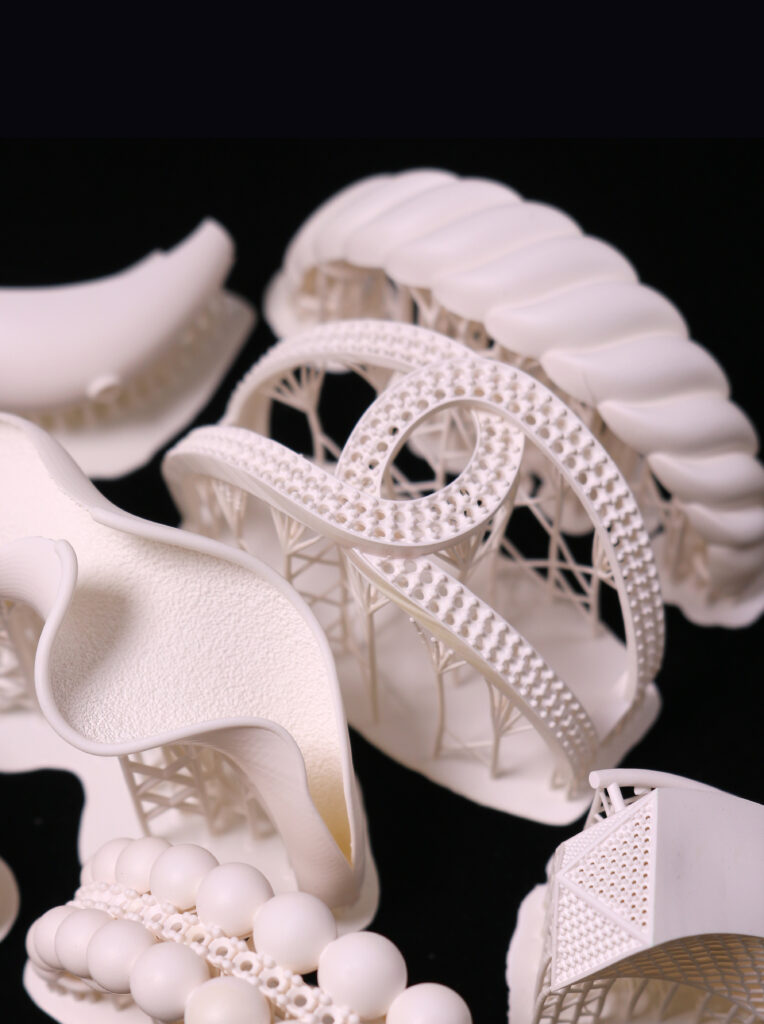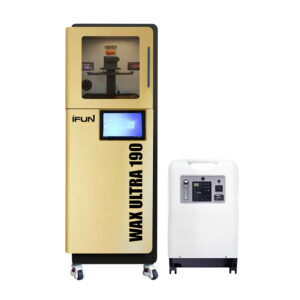This article explains why white resin is evaluated as the best resin for 3D printing. In addition, this article also covers material selection, printing settings, support structures, printer maintenance, and post-processing of high-quality resin printing.

White resin printing works: 3D printing masterpieces with both quality and application
I. Outstanding performance in the field of industrial design
II. Exquisite presentation in the art industry
- Art production
In the field of art creation, white resin is also highly favored by artists. Its excellent printing effect can perfectly reproduce the complex creative ideas of artists. For example, in the creation of some sculpture works, artists can use white resin to print works with high complexity, such as sculptures with delicate human body lines or unique natural textures. White resin can accurately express these elements, and the surface texture of the work is very good. It can be processed in various ways in post-processing, such as polishing to make it smoother, or adding pigments for coloring, etc., ultimately presenting a unique artwork.
- Jewelry and figurine makingJewelry production is similar. It can produce jewelry embryos with special textures or shapes, and the white color scheme of white resin can serve as a good foundation for subsequent metal plating and glass ceramic texture processing.
For jewelry and figurine making, white resin is an indispensable material. Take figurine making for example, figurines need to show the delicate appearance of characters, including facial expressions, clothing folds, etc. White resin can print very delicate parts on the surface, such as the facial features of the figurine head. After printing with white resin, they can be very clear, and after coloring and other processes, they will become vivid and realistic.
III. Play an important role in the medical field
Resin 3D Printing Parameter Optimization Techniques
I. Overview of optimization methods
II. Careful selection of materials and pretreatment techniques
- Material selection based on demand
When it comes to resin 3D printing, it is necessary to choose the appropriate resin material according to the purpose and requirements of the final printed product. For example, if you want to make parts that require high strength and high temperature resistance, such as in the 3D printing test prototype of automotive engine parts, you should choose high strength and high temperature resistant resin materials, such as imported black resin, which has high strength and high temperature resistance. If you only print general display models, you may choose cheaper materials such as economic white resin. In addition, the color of different resin materials will also affect their selection in certain specific applications. For example, for models with color themes, relatively pure colors such as white may be chosen for later coloring processing.
- Material pretreatment tips
Before printing, make sure the print bed is in a clean state. You can use detergent and cleaning cloth to wipe the surface to ensure that the resin material can better adhere to the print bed. This is because if the resin cannot adhere well to the print bed, it may cause problems with the initial layer during the printing process, such as parts falling off the print bed. In addition, if the resin material is stored for a long time or exposed for a period of time after opening, it is necessary to check whether its viscosity is appropriate. For viscosity abnormalities caused by moisture absorption or precipitation, corresponding recovery operations may be required, such as appropriate stirring.
III. Print settings and parameter adjustment strategies
- Print Speed SelectionFor models with simple shapes and few fine structures and textures, printing speed can be appropriately increased. For example, printing a square box model with few details may not significantly affect its quality with faster printing speed. However, if it is an artistic decorative model with fine patterns, printing speed needs to be reduced to ensure that the surface texture and shape can be accurately printed.In addition, different resin materials may also have some adaptability to printing speed. Some resins may still maintain good molding quality at higher speeds, while others are more sensitive.
Printing speed has a significant impact on printing quality. Although high-speed printing can shorten printing time, it is likely to cause the appearance of the printed work to be not smooth enough, and even cause distortion of the model shape. Therefore, the appropriate printing speed should be selected according to the complexity of the printed work.
- Precise temperature setting
Different resin materials require different printing temperatures, so it is necessary to ensure that the temperature is set within the range suitable for the material used. If the temperature is too low, the resin may not be fully cured, resulting in insufficient strength of the model or surface defects, such as uncured sticky surfaces. If the temperature is too high, it may cause excessive curing or even decomposition of the resin. For example, when printing some high-temperature sensitive resins, high temperature will change the chemical properties of the resin, affecting the printing effect. In addition, the temperature of the printing environment should also be kept relatively stable to avoid problems such as uneven curing of the resin caused by severe temperature fluctuations.
- The clever balance of ceiling height
The layer height refers to the thickness of each layer of resin solidification. The smaller the layer height is set, the higher the surface quality of the printed work will be, presenting more details, but this will also increase the printing time. The layer height should be adjusted according to the demand for surface quality and printing time. For example, when printing a very fine dental model for exhibition display, it may be necessary to set a smaller layer height to ensure that the microstructure of the teeth can be well presented. When printing a large building module model for preliminary inspection of building facade effect, if the surface details are not extremely demanding, the layer height can be appropriately increased to reduce printing time.
- Reasonable determination of filling density
The filling density determines the solidity of the printed object. Generally, a filling density of 20-30% can meet general needs. If higher strength is needed, such as when printing a mechanical part that needs to withstand greater pressure or tension, the filling density can be increased. However, increasing the filling density will increase the amount of resin used and printing time, so it needs to be considered comprehensively according to specific load-bearing requirements and material costs. For example, when printing a simple small hook model, a filling density of 20-30% may be sufficient for daily use, but if you want to print a large hook model for lifting heavy objects, you need to adjust the filling density to a higher level.
IV. Effective design of support structures and transition supports
- Principles of supporting structures
When printing complex shapes, the support structure is very important. When designing the support structure, it is necessary to consider the shape and center of gravity of the printed object, and add support where needed. For example, when printing a part with a large cantilever structure, the cantilever part is prone to deformation or collapse during the printing process due to the lack of direct bottom support, so appropriate support structures need to be added below the cantilever. These support structures are like Scaffolds in architecture, ensuring that the resin on the upper layer that has not yet solidified during the printing process will not shift or deform due to its own gravity and other reasons.
- Application of transitional support
Transitional support is also a very practical technique. It can help reduce the traces of support removal. When printing models with complex surfaces or multi-component combinations, transitional support can make the connection between the support and the model body smoother. Moreover, reasonable allocation of support structure and transitional support positions is also a key technique. Before printing, preview the model first, and then analyze where support structure and transitional support are needed. For example, when printing a model with narrow channels and internal complex structures, detailed design of support and transitional support is needed to ensure that the internal structure is printed intact and convenient for subsequent processing.
V. Printer debugging and maintenance elements
- Periodic inspection and cleaning of critical components
3D printers are complex machines that require regular inspection and cleaning of key components such as nozzles (for contact printing) and optical systems (for photocurable printing). Taking the optical system of a photocurable resin 3D printer as an example, if there is dust, stains, etc. on the lens, it will affect the propagation and focusing of light, thereby reducing printing accuracy. Regularly using specialized cleaning tools to clean the optical system can ensure the focusing accuracy of the light spot and the uniformity of the light. For nozzles, if there is resin residue blockage, it will cause uneven resin spraying or inability to spray normally, and regular cleaning is required.
- Flatness adjustment of print bed
Regularly checking and adjusting the flatness of the print bed is also essential. If the print bed is not flat, it may cause the printed object to not adhere well to the print bed. Either some areas are adhered too tightly, which may damage the print bed or print when removing the printed work, or some areas cannot adhere at all, failing at the beginning of printing. Using tools such as a level to measure and adjust the flatness of the print bed can effectively avoid these problems.
- Understanding the performance limitations of printers
Different 3D printers have different limitations, such as differences in maximum printing size, minimum layer height, material compatibility, etc. Understanding these limitations helps to better select and adjust printing objects. For example, if the maximum printing size of the printer is limited, when a larger model needs to be printed, it can be considered to split the model into several parts proportionally for printing, and then assemble it again. If the printer has poor compatibility with a new resin material, it cannot be forcibly used, otherwise various unpredictable problems may occur during the printing process, such as printing failure and poor model quality.
VI. Post-processing after printing
- Remove support and excess resin
After printing is completed, it is necessary to remove the support structure and excess resin on the model. Be careful when removing the support to avoid damage to the main body of the model, especially for some delicate parts. For the removal of excess resin, methods such as solvent soaking (such as isopropanol, which is effective for most resins) or scraping can be used. Different resin materials may have different adaptability to solvents. For example, some resins may experience surface softening if soaked in a specific solvent for too long, so it is necessary to choose the appropriate processing time according to the type of resin.
- Surface finishing and polishing
The surface of the printed model may have some defects, such as layering and stepped feeling. The smoothness of the surface can be improved by polishing and other processes. For some models printed on white resin, further processing such as coloring and polishing can be performed after polishing to obtain a better appearance. In addition, some resins may have insufficient surface hardness after printing, and specific chemical or coating treatments can be used to improve the surface hardness and enhance the durability of the model.


